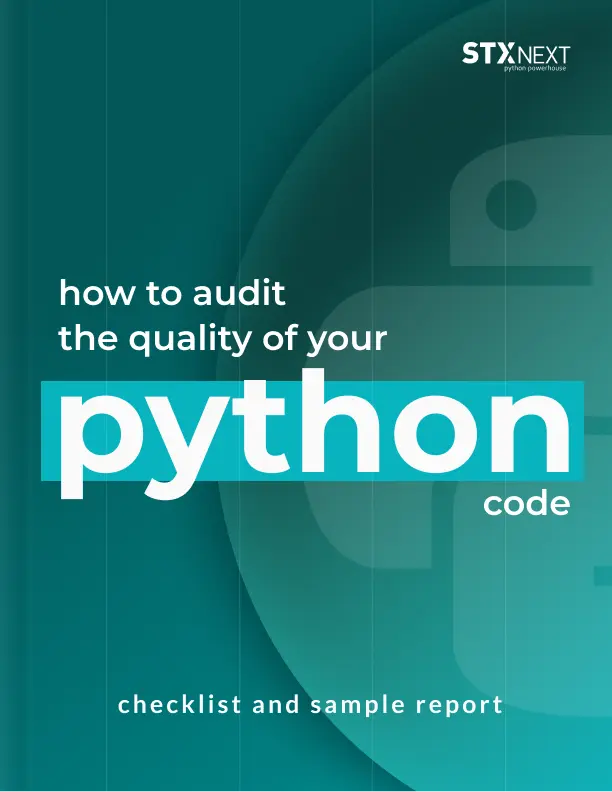
Are you about to introduce a new product to the market? Have you just inherited a huge chunk of legacy code? Or maybe the investors demand a solid technical check before they decide if your product is worth backing?
In each of these cases, a thorough code audit is the only way to make sure that your product is of good quality, secure, and ready to show to the world.
A code audit helps you determine if your product is:
Without an audit, you’re risking serious consequences: a slowdown of your project due to technical debt, dangerous security issues, and more.
For everyone in need of running a thorough code audit—or at least seeing what a comprehensive one should look like—we prepared a checklist and a sample report from an audit.
It’s over 20 pages of pure knowledge and a perfect point of reference for your future work.
By the time you’re finished, your Python code will be top-notch. You’ll sleep soundly knowing that no surprises will come back to haunt you.